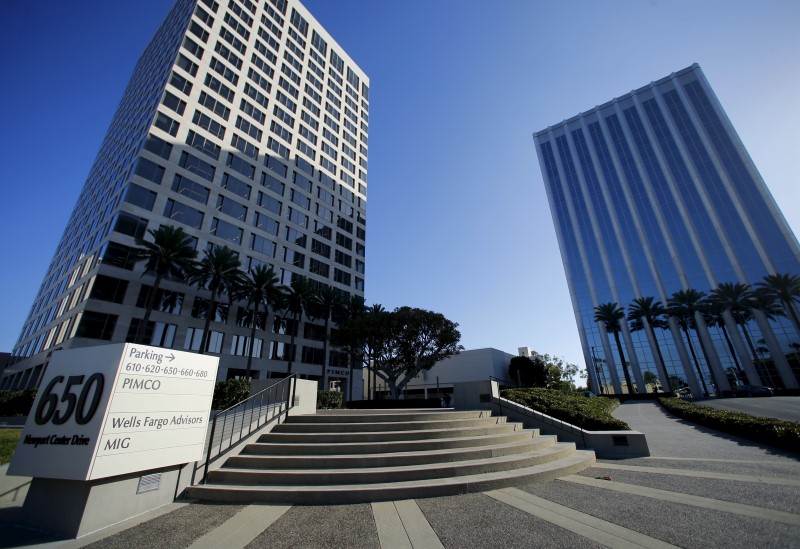By Jennifer Ablan
NEW YORK (Reuters) - One of the most popular actively managed ETFs, the Pimco Total Return Active Exchange-Traded Fund, has seen its assets stagnate as investors have gravitated toward rival funds and lower-cost passive bond ETFs, Morningstar data show.
In the first quarter the fund, also known as BOND, posted net withdrawals of $37.6 million while the overall bond ETF sector attracted over $33 billion, including $7 billion for the intermediate-term bond category, Morningstar said.
The Pimco Total Return Active ETF, an actively managed intermediate-term ETF intended to mimic the strategy of Pimco's flagship mutual fund and once run by Pimco founder Bill Gross, posted $130 million of inflows over the last year.
During that time, the bond ETF sector saw a record $74 billion in inflows and intermediate-term bond ETFs have attracted $22 billion, Morningstar said.
"Investor demand for fixed-income ETFs has been strong in 2016 as well as last year, but Pimco's BOND has not been a participant," said Todd Rosenbluth, director of ETF & mutual fund research at S&P Global Market Intelligence.
"Indeed, BOND had outflows in the first quarter, even as investors have sought out income in an ETF wrapper from passive and some active providers."
BOND is part of the intermediate-term bond category that Morningstar and others regard as the "core" category of bond funds. Pimco has been dominant in the intermediate-term bond world, both in mutual funds with the Pimco Total Return Fund, which was eclipsed in size by the passive Vanguard Total Bond Market Index Fund, and with BOND, the largest actively managed intermediate-term bond ETF.
The Pimco Total Return ETF, which hit its peak in assets under management in April 2013 with $5.2 billion, now has assets of $2.61 billion, Morningstar said.
By comparison, the actively managed SPDR DoubleLine Total Return Tactical ETF, which competes directly with BOND, has attracted $2.29 billion since its launch in February 2015, making it the second-largest actively managed intermediate-term bond ETF. The fund is led by Jeffrey Gundlach, Philip Barach and Jeffrey Sherman.
Dan Ivascyn, group chief investment officer at Pimco, told Reuters: "Investors are gravitating toward income-generating, high dividend ETFs which sometimes don't have restrictions on lower credit quality." For example, Pimco's Income Fund and Mortgage Opportunities Fund have benefited from investor demand for income.
DoubleLine analyst Loren Fleckenstein said the bulk of bond ETF inflows are going into funds with large exposure to high-quality, investment-grade bonds. He said: "The vast majority of bond ETF inflows has been into intermediate-term bond ETFs whose portfolios are heavily invested in investment-grade securities and are subject to duration limits. These are the opposite of high-yield bond funds."
BOND first began losing assets in September 2014 after the U.S. Securities and Exchange Commission said it was looking into whether Pimco inflated the returns of BOND, then managed by Gross. That same month, Gross exited Pimco abruptly.
Scott Mather, lead portfolio manager for the Pimco Total Return Active ETF, said inflows have been shifting toward passive ETFs but that BOND has its place once interest rates normalize and move higher.

For now, actively managed SPDR DoubleLine Total Return and the Fidelity Total Bond ETF as well as the Barclays (LON:BARC) Aggregate index-tracking iShares Core U.S. Aggregate Bond, Vanguard Total Bond Market ETF, Schwab U.S. Aggregate Bond ETF and the SPDR Barclays Aggregate Bond ETF intermediate-term bond ETFs have been enjoying net inflows in 2015 and so far in 2016, Morningstar data show.